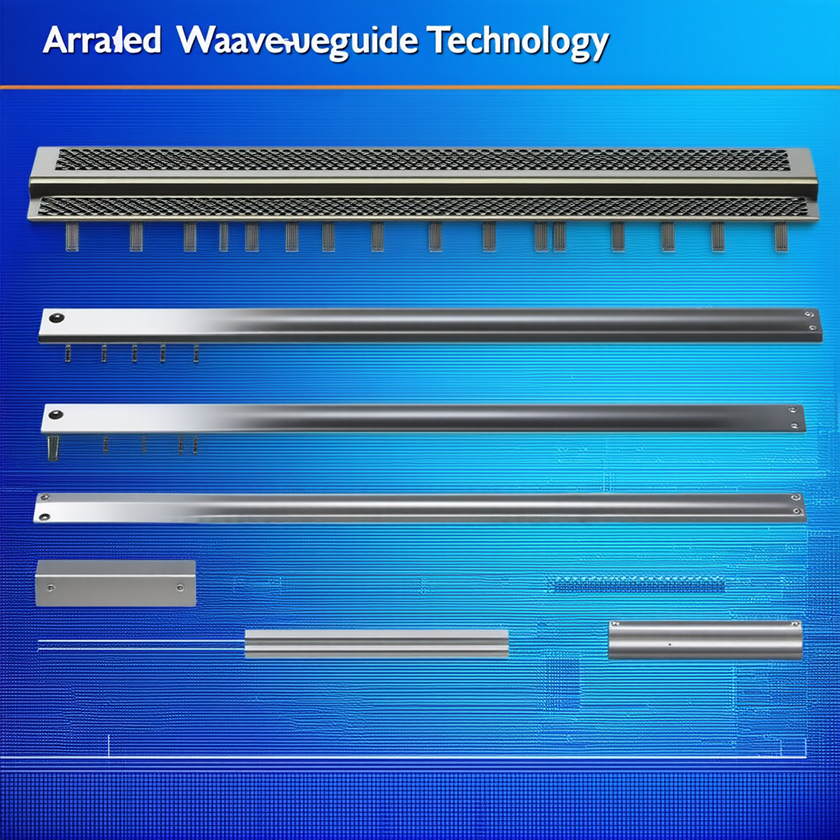Dense Wavelength Division Multiplexing (DWDM) technology plays a crucial role in optical fiber communications, with one of its core components being optical multiplexers and demultiplexers. These devices enable the simultaneous transmission of multiple optical signals through a single fiber, significantly enhancing the system’s capacity and efficiency. In DWDM systems, the implementation of optical multiplexers and demultiplexers primarily relies on three key technologies: thin-film technology, diffraction grating technology, and arrayed waveguide technology.
Thin-Film Technology
Thin-film technology is widely used in optical multiplexers and demultiplexers. It involves depositing multiple layers of dielectric thin films on the surface of optical components to achieve selective transmission or reflection of specific wavelengths. The thickness and refractive index of each layer are precisely calculated so that specific wavelengths can pass through while others are reflected or blocked. This multilayer thin-film structure design allows for efficient wavelength selectivity.
Thin-film optical multiplexers and demultiplexers offer the advantages of low insertion loss and high isolation. Low insertion loss means minimal signal loss when passing through the device, ensuring efficient system transmission. High isolation effectively prevents crosstalk between different wavelength signals, improving the system’s signal-to-noise ratio and transmission quality. Additionally, thin-film technology provides excellent environmental stability and long lifespan, making it widely applicable in various scenarios.
Diffraction Grating Technology
Diffraction grating technology utilizes the principle of light diffraction, separating the incoming multi-wavelength optical signal into different wavelength components through a diffraction grating. A diffraction grating is an optical element with a periodic structure. When a multi-wavelength optical signal passes through the grating, different wavelengths diffract at different angles, achieving wavelength separation or synthesis.
Diffraction grating technology offers strong wavelength selectivity and precise channel spacing, enabling high-density wavelength separation crucial for high-capacity DWDM systems. Additionally, diffraction gratings are cost-effective and benefit from mature manufacturing processes, making them widely adopted in practical applications. However, diffraction gratings have higher insertion loss and polarization-dependent loss, requiring compensation and optimization in practical use.
Arrayed Waveguide Technology
Arrayed Waveguide Grating (AWG) technology is a high-performance optical multiplexing and demultiplexing solution based on integrated optical waveguide technology. AWGs consist of a series of waveguides with different optical path lengths, which separate the input multi-wavelength optical signal into different positions at the output end, achieving wavelength separation and synthesis.
AWGs offer high channel density, low insertion loss, and low polarization-dependent loss, making them suitable for high-capacity DWDM systems. Since AWGs can be implemented on a single integrated optical chip, they are advantageous in terms of miniaturization, cost-effectiveness, and high stability. Despite the relatively complex design and manufacturing processes, their excellent performance makes AWGs significant in high-end optical communication equipment.
In DWDM systems, optical multiplexers and demultiplexers are key devices for achieving efficient multi-wavelength optical transmission. Thin-film technology, diffraction grating technology, and arrayed waveguide technology are three essential technologies for implementing these devices. Thin-film technology, with its efficient wavelength selectivity and environmental stability, is widely used in practical applications. Diffraction grating technology, with its strong wavelength selectivity and cost-effectiveness, serves as an important solution. Arrayed waveguide technology, with its high channel density and excellent performance, holds a significant position in high-end optical communication equipment.
By continuously optimizing and improving these key technologies, DWDM systems will continue to play an essential role in the field of optical fiber communications, meeting the growing demand for communication capacity. In the future, as technology advances, the performance of optical multiplexers and demultiplexers will further improve, providing stronger support for efficient and reliable optical communication systems.





